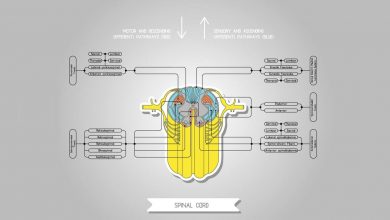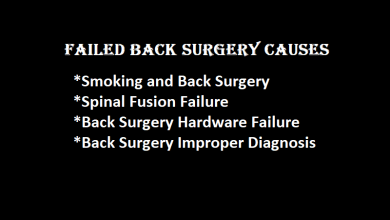Failed Back Surgery Prevention

FBSS Prevention
Whilst every effort is taken, in most cases, to ensure that back surgery is essential and likely to be a success, there are always risks associated with surgery. For this reason patients should ensure that they do not feel pressured into surgery and that they have adequate resources to meet the challenges of the procedure and the recovery period, both physically and mentally.
Certain surgeries are considerably more likely to produce a positive result but are only applicable in specific conditions. A discectomy, or microdiscectomy is a common procedure used to alleviate leg pain from a lumbar disc herniation. This is considerably more effective than when the same procedure is performed to treat the symptom of lower back pain due to the latter’s potential to be caused by a wide range of pathological conditions. Similarly, spinal fusion can effectively treat spinal instability due to a condition such as spondylolisthesis but is less successful for a condition like multi-level degenerative disc disease in the lumbar spine.
Realistic Expectations
Patients should consider their expectations for back surgery and only decide to go ahead when their day to day living becomes intolerable due to their leg and/or back pain. Having back surgery may worsen a condition that is otherwise manageable through conservative treatment and most, respectable, spinal surgeons will hesitate to operate on a patient looking for a quick fix. Asking about a surgeon’s success rate and the experiences of previous, similar, patients is advisable prior to scheduling back surgery.

Interpreting Success
The incidence of failed back surgery syndrome is open to some considerable debate as a surgeon may consider success to mean something quite different to the patients’ interpretation. In single level fusion surgery for example, surgeons are likely to quote a 98% success rate (reflecting the incidence of actual fusion), but patients’ pain is only significantly relieved in 40-80% of cases. Multiple level fusion can have only a 15% success rate in terms of relieving pain. Other surgeries, such as discectomy may have a 95-98% success rate in the eyes of the surgeons, a 74% success rate in terms of patients being free of pain medication and returning to work, and only a 29% success rate for patients on workers’ compensation. Semantics and statistics make failed back surgery syndrome a very slippery customer indeed.
Smoking and Back Surgery
Smoking is a major risk factor for patients developing failed back surgery syndrome, particularly in cases where bone grafts are used and spinal fusion is carried out. The rate of successful union diminishes rapidly with cigarette use before and after surgery as nicotine and other chemicals in the tobacco inhibit the formation of new bone. Circulation is also affected by smoking, meaning that oxygen and nutrients may not be delivered in sufficient quantities to supply an adequate recovery.

How Smoking Affects the Body
Smoking also decreases the body’s reserves of vitamin C which has a role in the formation of collagen, a structural protein involved in scar tissue formation. The cadmium in tobacco can inhibit the levels of zinc in the body which is essential for the formation of proteins and new tissue and also plays a role, along with vitamin C, in regulating the immune system. Inflammation and poor protein synthesis can encourage abnormal scarring and lead to epidural fibrosis where nerve roots are tethered by adhesions. Leg pain and back pain may then occur in such cases, making smoking extremely detrimental to a successful recovery. It may, for many patients, be worth delaying back surgery until they have quit smoking in order to effect a more prosperous outcome.




